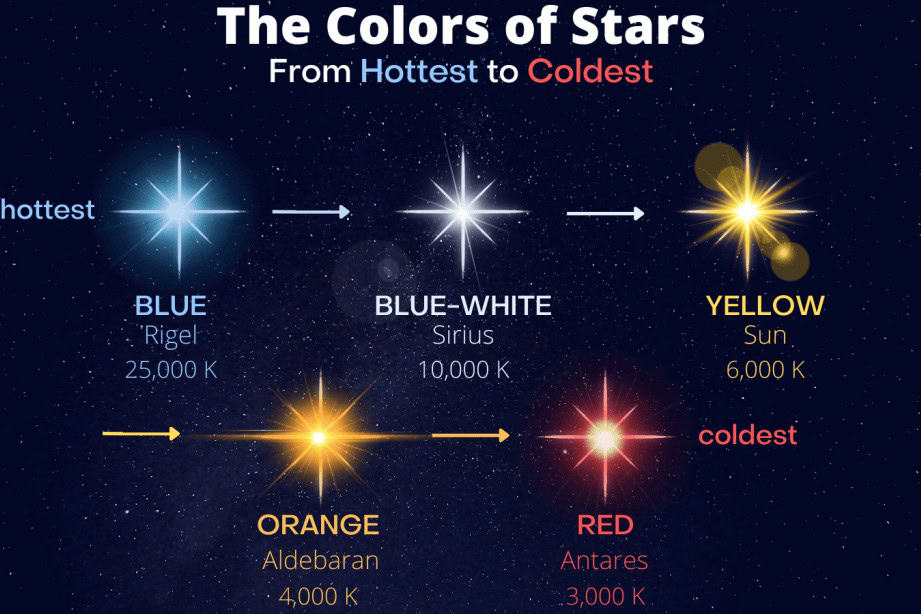In ancient times, stars were believed to be the spirits of people or the nails that held up the sky. Various explanations were devised to understand why stars emit light at night, and for a long time, it was believed that the Sun was a separate entity from the stars.
The issue of thermal reactions occurring in stars, including our closest star, the Sun, has been a subject of concern for scientists in multiple fields such as physics, chemistry, and astronomy. These experts have sought to comprehend the mechanisms behind the release of thermal energy accompanied by intense radiation.
Chemists had the belief that exothermic chemical reactions took place in the stars, leading to the emission of significant amounts of heat. On the other hand, physicists disagreed with the idea that there were reactions occurring between substances in these celestial objects, as no reaction could generate such a tremendous amount of light over billions of years.
With the introduction of Mendeleev’s renowned table, a new era in the exploration of chemical reactions commenced. It was discovered that radioactive elements existed, and soon it became evident that radioactive decay reactions were the primary cause of the radiation emitted by stars.
The contemporary concept of stellar radiation
In 1903, the prevailing understanding of why stars emit light and heat was revolutionized by the Swedish scientist Svante Arrhenius, who proposed the theory of electrolytic dissociation. As per his hypothesis, the primary source of energy in stars is hydrogen atoms that combine to form heavier helium nuclei. These fusion processes are triggered by intense gas pressure, high density, and extreme temperatures (reaching around fifteen million degrees Celsius) within the star’s core. This postulation sparked further investigation by other researchers, leading them to conclude that such fusion reactions are capable of releasing the tremendous amount of energy that stars generate. It is also plausible that hydrogen fusion sustains the luminosity of stars for billions of years.
The energy generated within the depths of stars is transported to the outer layers of gas and eventually to the star’s surface, where it is emitted as radiant light. It is hypothesized by scientists that these light rays require tens or even hundreds of thousands of years to travel from the star’s core to its surface. Subsequently, it takes a significant amount of time for this radiation to reach Earth. As a result, it takes approximately eight minutes for the Sun’s radiation to reach our planet, while the light emitted from Proxima Centauri, the second closest star, takes over four years to reach us. Additionally, the light emitted by numerous stars visible to the naked eye has traveled for thousands or even millions of years before reaching us.
It never crosses our minds that there might be existence beyond our planet, beyond our solar system. Conceivably, there is existence on a celestial body revolving around a blue or white or red or yellow star. Conceivably, there is another planet that mirrors Earth with comparable inhabitants, yet our knowledge remains limited. Our satellites and telescopes have discovered several planets that conceivably support life, but these planets are thousands or even millions of light years distant.
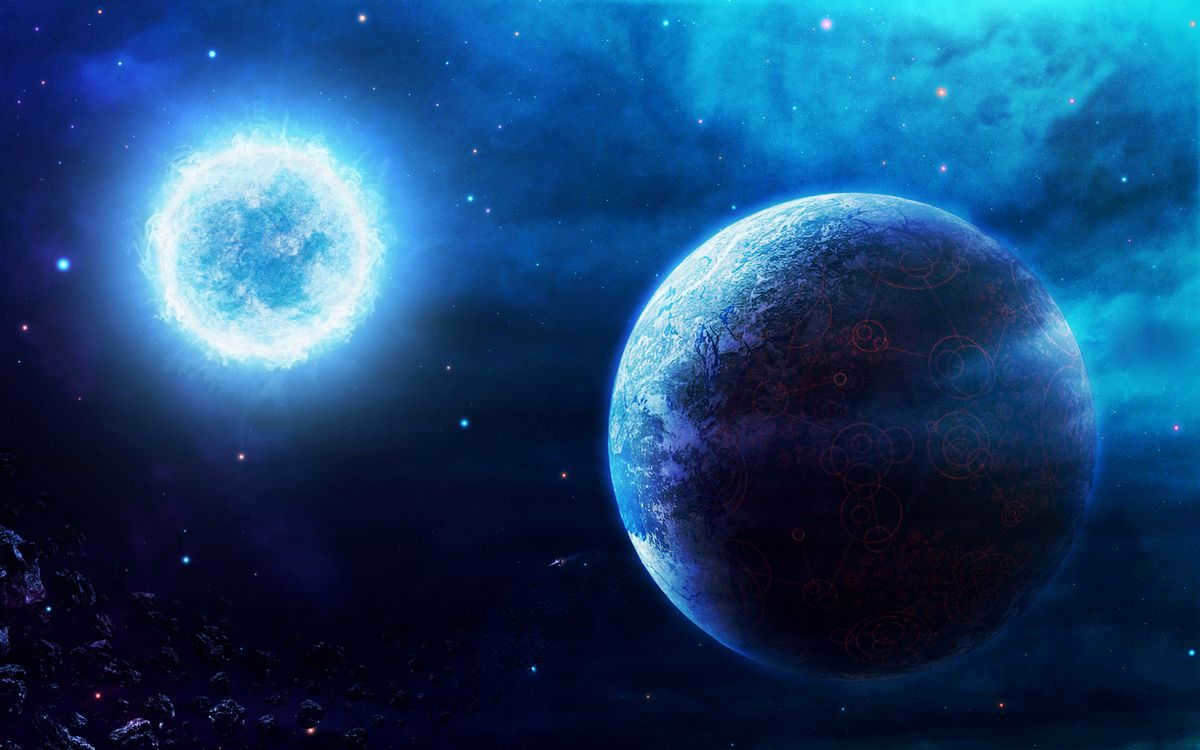
The stars found within globular star clusters, which have higher temperatures than ordinary stars and exhibit a significant blue shift in their spectra compared to other stars of similar luminosity within the cluster, are known as blue laggard stars. This unique characteristic allows them to stand out on the Hertzsprung-Russell diagram in comparison to other stars within the same cluster. The presence of these stars challenges existing theories of stellar evolution, which suggest that stars formed within the same time frame should be located within a specific region on the Hertzsprung-Russell diagram. In this framework, the only factor influencing a star’s position is its initial mass. However, the frequent occurrence of blue laggard stars outside of this expected range may provide evidence for the concept of anomalous stellar evolution.
Various experts have proposed several hypotheses in an attempt to elucidate the origins of these phenomena. The theory with the highest probability suggests that these celestial bodies, which possess a stunning blue hue, were previously binary stars that have since undergone or are currently undergoing a process of merging. As a result of this stellar fusion, a brand new star is born, boasting a significantly greater mass, luminosity, and temperature in comparison to other stars of a similar age.
If it were possible to demonstrate the validity of this hypothesis, the concept of stellar development would be relieved of the complications associated with blue stragglers. The resulting star would possess a greater abundance of hydrogen in its chemical makeup, thus exhibiting similar characteristics to that of a youthful star. There exists supporting evidence for such a proposition. Observations have indicated that retired stars are most frequently located within the central regions of globular clusters. As a consequence of the higher concentration of stars within such regions, the likelihood of close encounters or collisions becomes significantly heightened.
One instance of a merger can be witnessed in August 2008, when an event involving the object V1309 occurred. The brightness of this object increased by several tens of thousands of times upon detection, only to return to its original value after several months. After 6 years of observations, scientists deduced that this object is comprised of two stars with a circulation period of 1.4 days. These findings have led scientists to speculate that the merger of these two stars took place in August 2008.
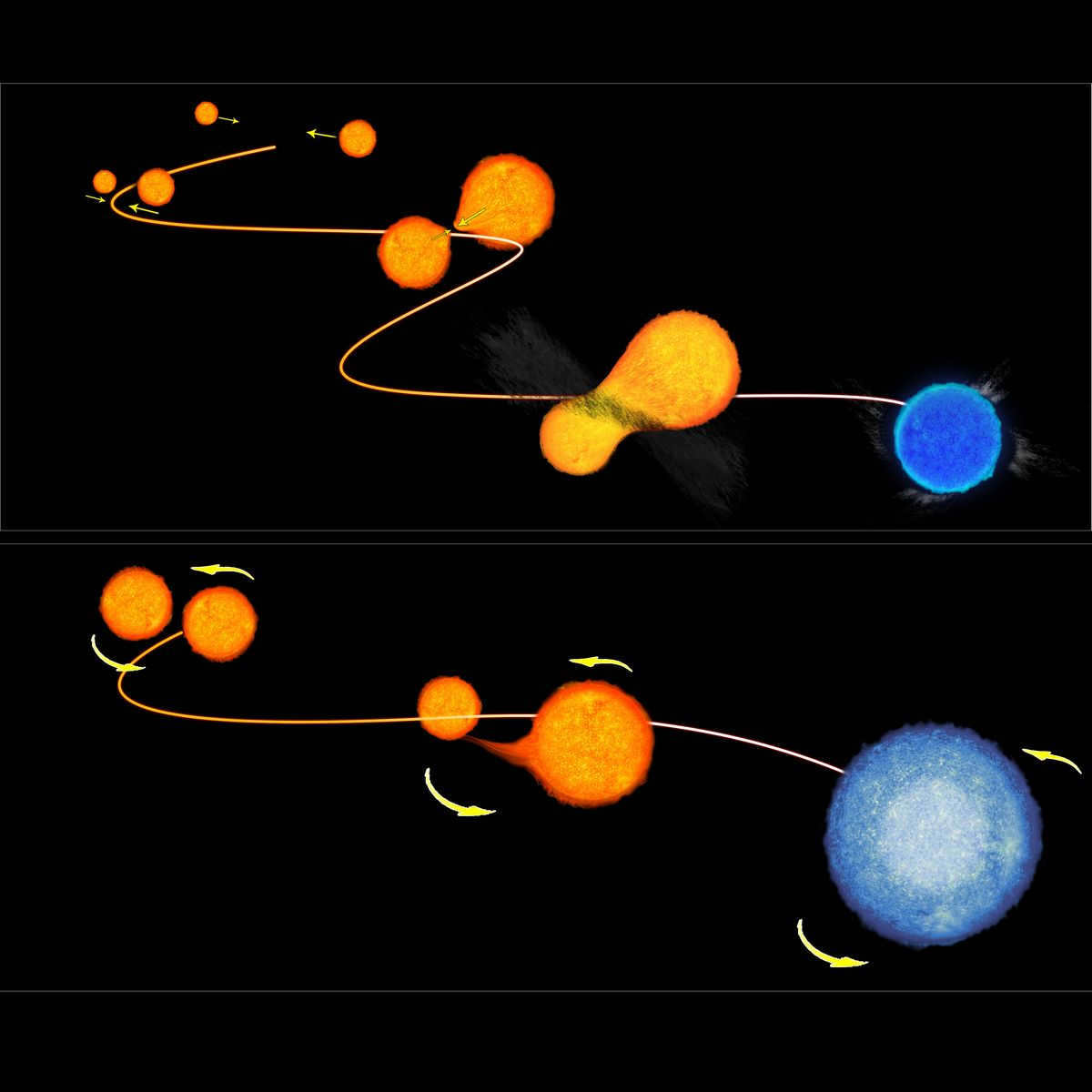
Blue stragglers exhibit high rotational momentum. For instance, the rotational velocity of the star positioned in the center of the 47 Tucana cluster is 75 times faster than that of the Sun. According to the theory, these stars have a mass 2-3 times greater than other stars within the cluster. Additionally, it has been observed that neighboring stars to blue stragglers have lower levels of oxygen and carbon. It is believed that these substances are extracted from the orbiting stars, resulting in an increase in brightness and temperature. The “robbed” stars reveal areas where the original carbon has undergone a transformation into different elements.
Examples of blue stars’ names
Some examples of names for blue stars are Rigel, Gamma Sails, Alpha Giraffe, Zeta Orion, Tau of the Big Dog, and Zeta Korma.
White stars are stars that are colored white
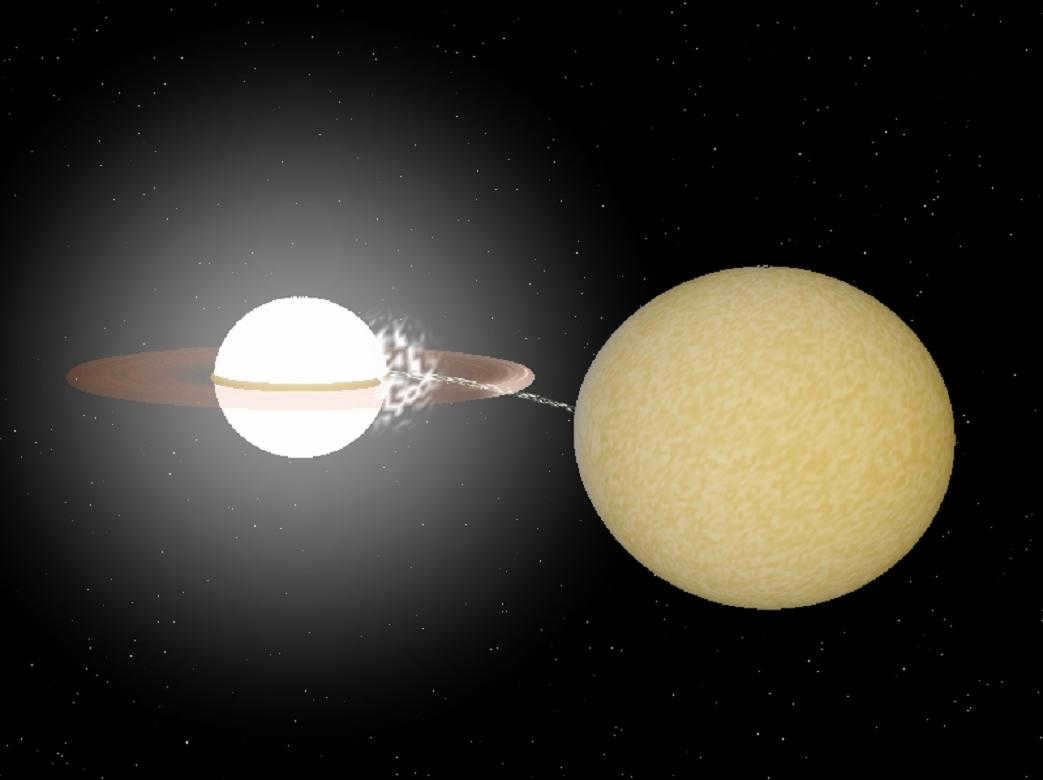
In 1844, Friedrich Bessel, the director of the Königsberg Observatory, made a fascinating discovery. He observed a slight deviation in the trajectory of the brightest star in the sky, Sirius. Bessel hypothesized that Sirius had a companion and even calculated the approximate period of rotation for stars around their center of mass, which he estimated to be around fifty years. Despite his findings, Bessel did not receive much support from other scientists, as no one else was able to detect the satellite, even though its mass should have been similar to that of Sirius.
The outer layer of this star, which is white in color, is heated to a temperature of 25,000 Kelvin. Additionally, the star has a relatively small radius. Based on these characteristics, researchers have deduced that the satellite possesses a remarkably high density, measuring 106 g/cm3. In comparison, the density of the star Sirius is approximately 0.25 g/cm3, while the Sun has a density of 1.4 g/cm3. In the year 1917, precisely 55 years later, scientists made another discovery: a different white dwarf star. This star was aptly named after the scientist who first spotted it – van Maanen’s star. It can be found within the constellation of Pisces.
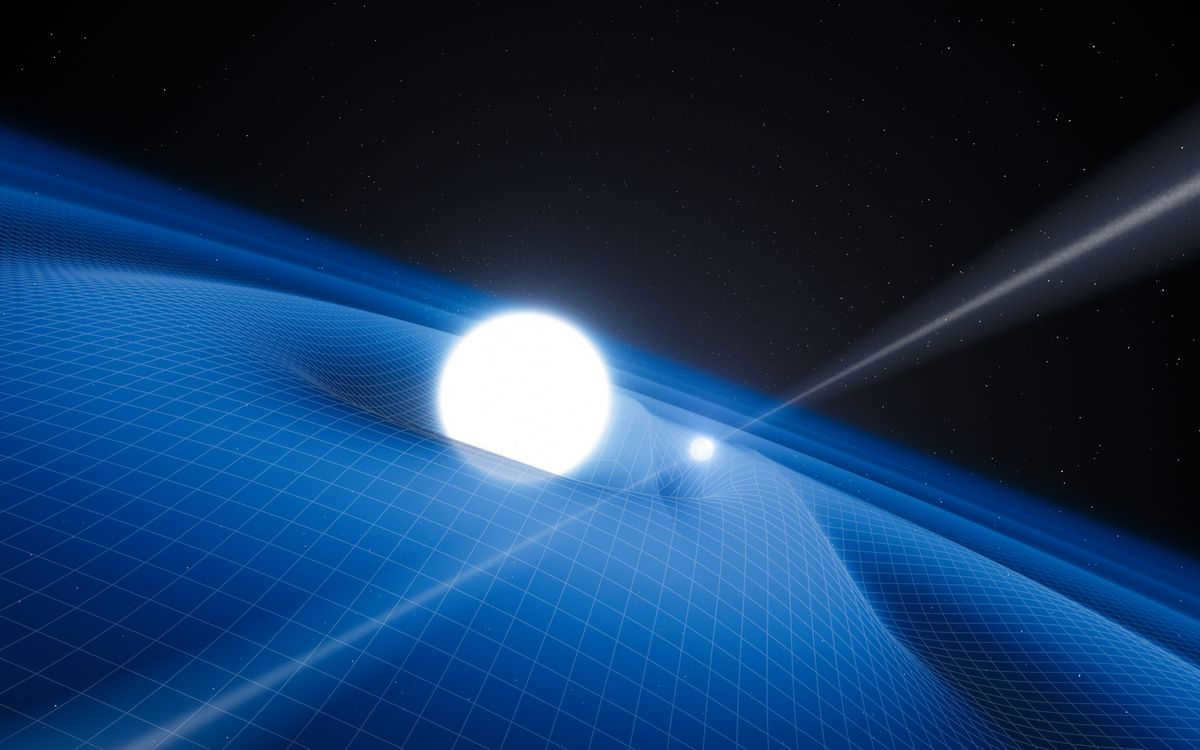
Examples of white stars’ names
Some examples of white stars include Vega in the constellation Lyra, Altair in the constellation Eagle (which are visible in the summer and fall), Sirius, and Castor.
Yellow stars are stars with a yellow color
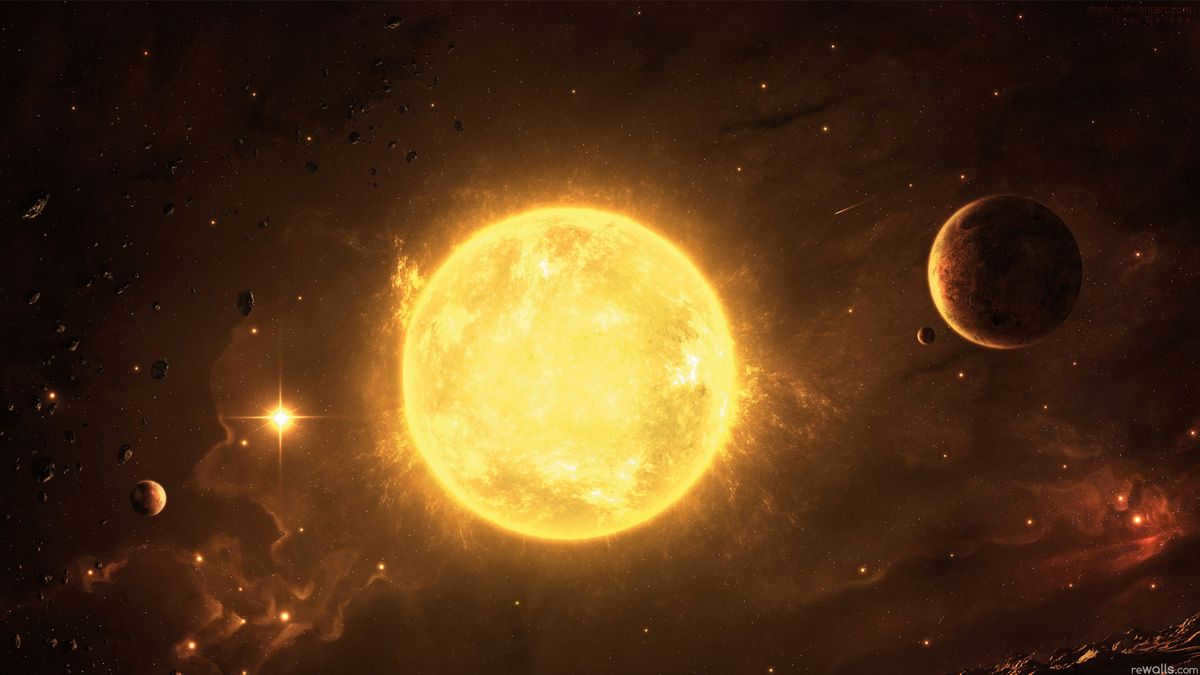
Small stars within the mass range of the Sun (0.8-1.4) are commonly known as yellow dwarfs. These stars emit a yellow glow during the process of nuclear fusion, where helium is synthesized from hydrogen.
The surface temperature of yellow dwarfs reaches approximately 5-6 thousand Kelvin, and their spectral classes range from G0V to G9V. Yellow dwarfs have a lifespan of around 10 billion years. As hydrogen fuel is depleted, these stars undergo a significant expansion and transform into red giants. Aldebaran serves as an example of a red giant. Red giants can also give rise to planetary nebulae by shedding their outer layers of gas, leaving behind a dense white dwarf core.
If we consider the Hertzsprung-Russell diagram, we can see that yellow stars are positioned in the central area of the main sequence. The Sun, being a typical yellow dwarf, serves as a suitable model for understanding the general characteristics of yellow dwarfs. However, there are other notable yellow stars in the night sky, such as Alhita, Dabih, Toliman, Hara, and more. Despite not having a high brightness, these stars possess their own unique qualities. For instance, Toliman, which is the second closest star to the Sun after Proxima Centauri, has a magnitude of 0 but exhibits the highest brightness among all yellow dwarfs. Located in the constellation Centaurus, Toliman is part of a complex system consisting of 6 stars. Its spectral class is G. On the other hand, Dabih, situated 350 light-years away, belongs to the spectral class F. Its high brightness can be attributed to the presence of a nearby star belonging to the spectral class A0.

Examples of Yellow Star Names
Some examples of yellow stars include Toliman, HD 82943, Hara, Dabih, and Alhita.
Red Stars – Stars with a Red Color
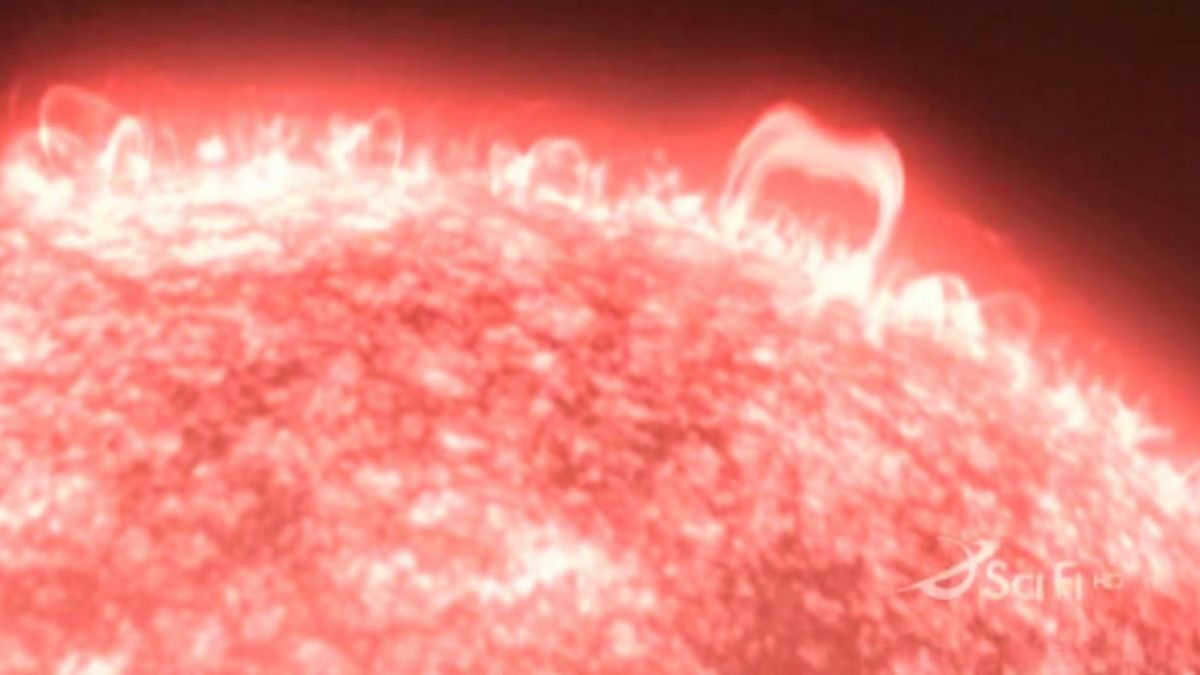
If you have ever looked through a telescope and witnessed the breathtaking sight of red stars illuminating the night sky, then you know the awe-inspiring beauty that will be explored in this article. For those who have yet to experience this phenomenon, it is highly recommended to seek out these celestial wonders in the near future.
If you were to compile a roster of the most vibrant crimson stars in the celestial expanse, an endeavor readily accomplished even by the novice astronomer armed with a simple telescope, you would discover that they all belong to the category of carbon stars. The initial identification of these crimson giants dates back to the year 1868. These stellar entities boast a relatively low temperature, and moreover, their exterior layers are richly imbued with a substantial abundance of carbon. While in the past, these stars were classified under the two distinct spectral classes of R and N, contemporary scientists have consolidated them into a singular class denoted as C. Within each spectral class, there exist subclasses ranging from 9 to 0. In this particular context, a C0 classification signifies that the star in question possesses a higher temperature albeit exhibiting less of the red hue that characterizes C9 stars. Furthermore, it is of paramount importance to note that all stars dominated by carbon exhibit an inherent variability, either manifesting as long-periodic, semi-regular, or irregular fluctuations.
Furthermore, the list also includes two red semi-regular variables known as m Cepheus. William Herschel found m Cepheus’s peculiar red hue intriguing and named it “garnet.” These stars exhibit irregular fluctuations in brightness that can persist for anywhere from a few dozen days to several hundred days. These variable stars fall under the M class category (comprising cool stars with surface temperatures ranging from 2400 to 3800 K).
The following two columns in the table show the position of the stars in the year 2000.0. Due to the rising popularity of the Uranometria 2000.0 atlas among fans of astronomy, the final column of the ranking indicates the search map number for each star listed. In this instance, the initial digit represents the volume number, while the second digit represents the sequential number of the map.
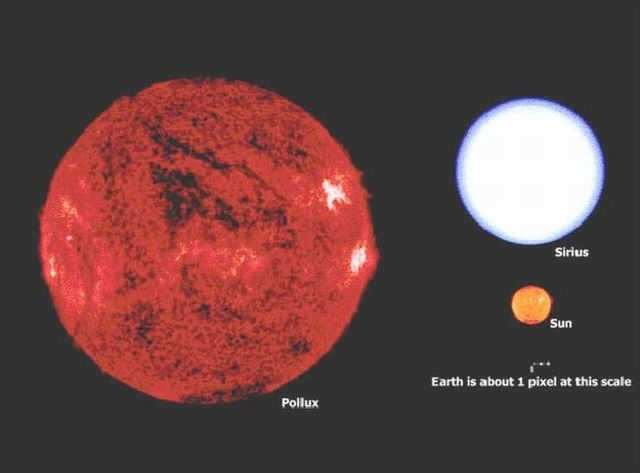
In the rating, you can also see the highest and lowest values of star magnitudes, which indicate their brightness. It is important to note that stars with lower brightness tend to have a more intense red color. For stars with known variability periods, this information is displayed as the number of days, while objects without a known period are labeled as Irr.
Locating a carbon star doesn’t require much skill, just a telescope powerful enough to spot it. Even if it appears small, its vibrant red color is sure to catch your eye. So don’t be discouraged if you don’t spot one right away. Simply use an atlas to locate a nearby bright star and then navigate from there to the red one.
The perception of carbon stars varies among different observers. Some individuals perceive them as precious rubies or a far-off smoldering coal, while others view them as a deep crimson or blood red hue. To begin with, there exists a compilation of six of the most luminous red stars, and by locating them, one can bask in their exquisite splendor.
Instances of red stars – exemplifications

Diverse Colors of Stars
Stars display an extensive array of colors, each with its own unique shades. This is exemplified by the constellation known as the “Jewel Box,” which features a combination of blue and sapphire stars, surrounding a brilliantly shining orange star. In contrast, our Sun emits a pale yellow hue.
The primary factor that contributes to the variation in star colors is the temperature of their surface. The explanation is straightforward – light is a form of radiation that propagates as waves. The wavelength, which is the distance between wave crests, is incredibly small. To visualize this, imagine dividing a 1cm segment into 100,000 identical parts. A few of these segments comprise the wavelength of light.
Furthermore, it is widely recognized that the color of objects can be greatly influenced by temperature. An illustrative example of this phenomenon is when a metallic item is exposed to heat. As the temperature rises, the object undergoes a transformation in color, transitioning from its original hue to a vibrant shade of red. In the event that the heat source intensifies, the object’s color would subsequently change, progressing from red to orange, then from orange to yellow, and finally from yellow to a brilliant white. Moreover, if the temperature were to escalate even further, the object’s color would ultimately evolve into a dazzling blue-white.
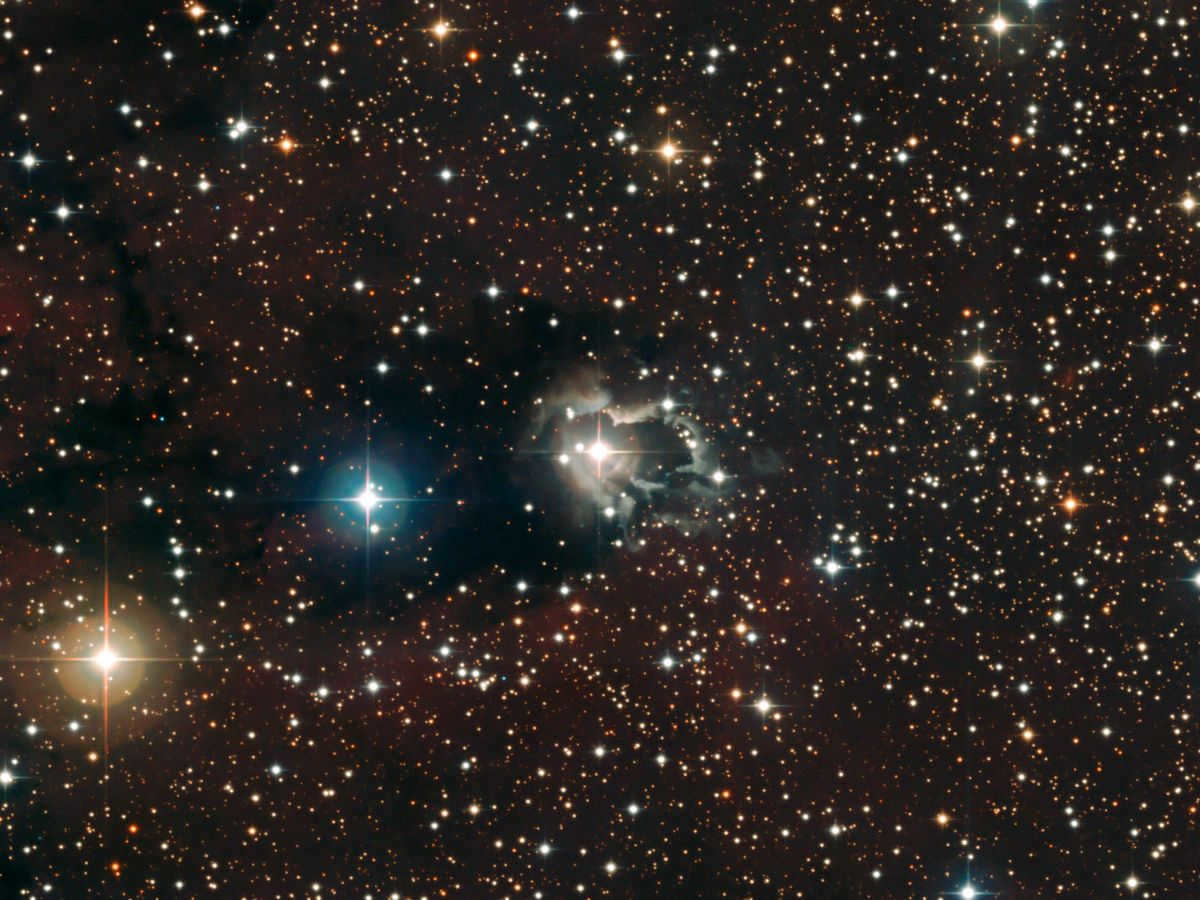
The Sun is a typical example of a yellow star because it has a surface temperature of around 5.5 thousand degrees Celsius. However, there are also blue stars that can reach temperatures of up to 33 thousand degrees.
Scientists have discovered a connection between color and temperature based on the laws of physics. The temperature of an object is directly proportional to the amount of radiation it emits and inversely proportional to the wavelength of that radiation. Blue light has a shorter wavelength compared to red light. When gases emit photons, the energy of those photons is directly related to the temperature of the gas and inversely related to the wavelength of the emitted radiation. This is why the hottest stars are characterized by emitting radiation in the blue part of the spectrum.
Due to the limited supply of nuclear fuel in stars, it eventually gets depleted, resulting in the cooling of stars. This is the reason why middle-aged stars appear yellow, while older stars appear red.
While we can accurately describe the color of the Sun due to its proximity to our planet, it becomes more challenging to determine the color of stars that are millions of light-years away. To address this, scientists utilize a device called a spectrograph. By passing the light emitted by stars through a spectrograph, it becomes possible to perform spectral analysis on almost any star.
Furthermore, the color of a star can provide insights into its age. Mathematical formulas enable scientists to determine the temperature of a star through spectral analysis, which in turn can be used to calculate its age.
Watch online videos about the enigmas of stars
Stars are the fundamental entities in the observable universe. The celestial realm is incredibly vast and varied. The subject of cosmic luminaries is boundless. The sun was designed to radiate light during the day, while the stars were meant to illuminate the earthly path for humanity at night. In this article, we will delve into the process of how the mesmerizing celestial bodies emit the light that we perceive.
The birth and death of stars are both visible phenomena in the night sky and have been the subject of observation by astronomers for a long time. Numerous discoveries related to these phenomena have been documented in scientific literature. Stars are massive fireballs that emit light, but what causes them to glow and exhibit various colors?
These celestial bodies are formed from a diffuse mixture of gas and dust, which undergoes gravitational compression in denser regions, aided by their own gravity. The interstellar medium, from which stars are born, consists primarily of gas (hydrogen and helium) and solid mineral particles. Our primary star, the Sun, is crucial for supporting life on Earth. Interestingly, many stars are much larger than the Sun, yet we do not experience their effects and can still exist without them.
Our planet relies on the Sun for both heat and light. Consequently, it is crucial for us to experience its warmth and brightness. Although stars are hotter and larger than the Sun, they are positioned at such vast distances that we can only admire their radiance, and only at night.
During nighttime, stars appear as tiny, twinkling specks in the sky. However, why are we unable to see them during the daytime? Starlight is akin to the beams emitted by a flashlight, which are scarcely noticeable during daylight hours, but indispensable at night as they illuminate the path ahead.
When is the peak brightness of stars in the night sky and what causes their illumination?
The month of August offers the optimal conditions for stargazing enthusiasts. During this time, the nights are enveloped in darkness, and the atmosphere remains clear, providing an illusion of being able to touch the sky. Those who gaze up at the heavens, especially children, often ponder upon the question, “Why do stars emit light and where do they go?” Interestingly, August is a time when stargazing is frequently observed, offering a captivating spectacle that captivates both our eyes and souls. It is believed that when one catches a glimpse of a shooting star, they should make a wish, as it is said to be guaranteed to come true.
Nevertheless, it is intriguing to note that what appears to be a falling star is actually a meteor ablaze. Nevertheless, this occurrence remains remarkably captivating. As time passes, generations come and go, yet the sky remains unchanging – a wondrous and enigmatic expanse. Much like ourselves, our predecessors gazed upon it, imagining the shapes of mythological beings and objects within the constellations, making wishes and dreaming.
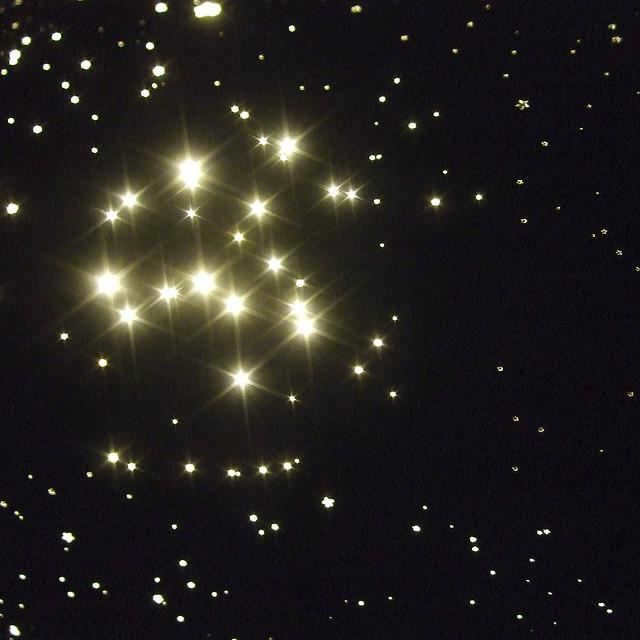
What causes light to be visible?
Stars, which are cosmic objects, emit an immense amount of thermal energy. This energy release is accompanied by a strong emission of light, a portion of which reaches our planet and becomes visible to us. This is the simple answer to the question, “Why do stars shine in the sky, and do all celestial bodies emit light?” For instance, the Moon is Earth’s satellite, and Venus is a planet in our solar system. We don’t see their own light, but only the light that is reflected off them. Stars, on the other hand, are the actual source of light radiation as a result of energy being released.
Various celestial objects emit light in different colors, including white, blue, and orange. Some even display a shimmering array of hues. The reason for these variations lies in the nature of these objects, which are massive spheres composed of gases that are incredibly hot. The temperature of these stars determines their luminosity, resulting in a diverse range of colors. The hottest stars emit a blue light, followed by white, then progressively cooler shades of yellow, orange, and red.

The Phenomenon of Star Twinkling
Many individuals have pondered the question: why do stars emit light at night and why does their luminosity appear to flicker? It is important to note that stars do not actually twinkle; it is merely an optical illusion. The reason behind this phenomenon lies in the fact that starlight traverses Earth’s atmosphere. As the light beam travels such vast distances, it encounters numerous refractions and alterations. These refractions give rise to the perception of twinkling that we observe.
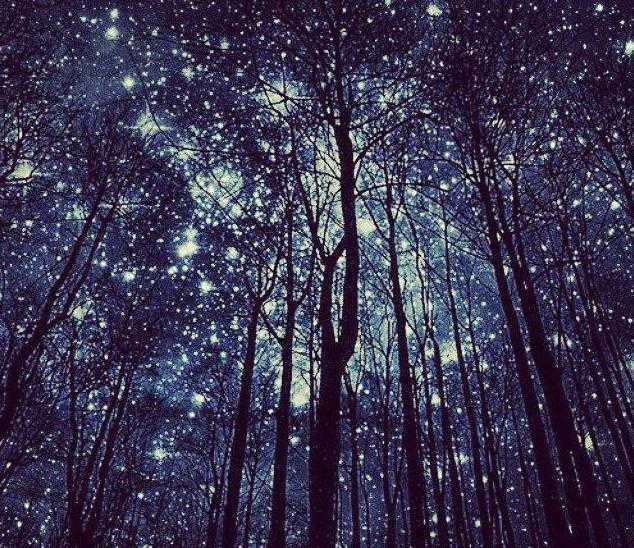
A star goes through various stages in its life cycle, each characterized by a unique shine. Eventually, as it nears its end, the star transforms into a red dwarf and gradually cools down. The dying star emits pulsating radiation, creating the illusion of flickering or blinking. During daylight hours, the star’s light is still present, but it is overshadowed by the intense brightness of the Sun. It is only at night when the absence of sunlight allows us to see the stars.
Every star, including our Sun, is a massive ball of glowing gas. Stars shine due to the immense amount of energy they release, which is generated by thermonuclear reactions.
Each star is a massive, luminous sphere of gas, similar to our Sun. Stars emit light because they release vast amounts of energy. This energy is generated through thermonuclear reactions. Every star contains a multitude of chemical elements. For instance, scientists have discovered at least 60 elements within the Sun, including hydrogen, helium, iron, calcium, magnesium, and more.
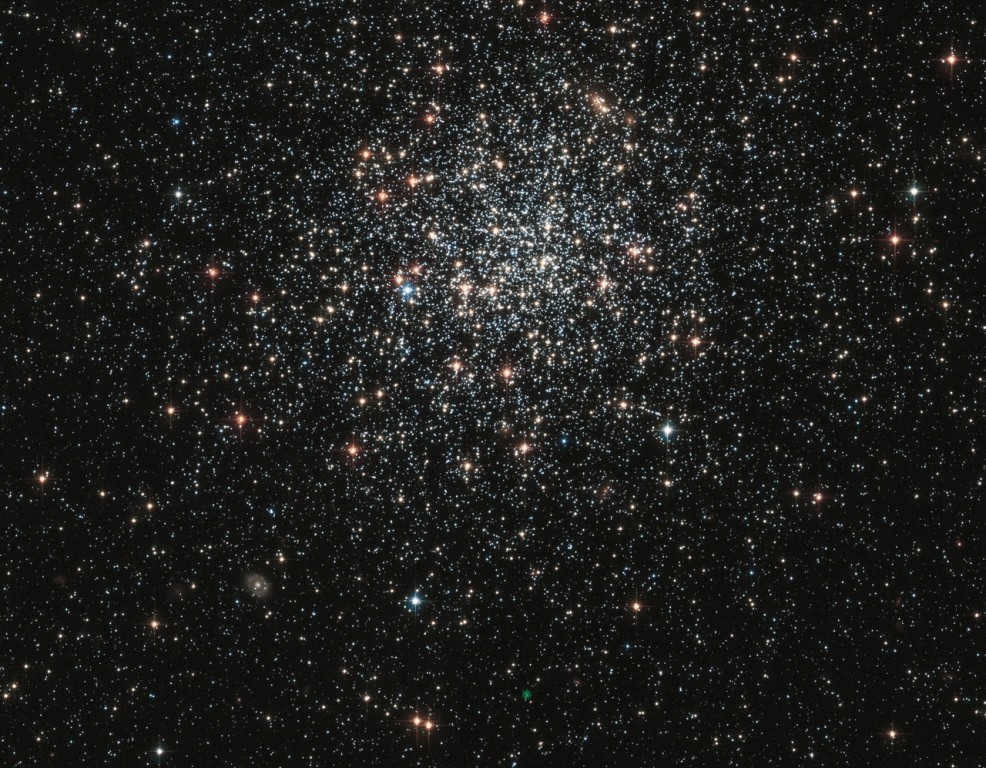 So why does the Sun appear so small? It’s due to its significant distance from us. Similarly, stars appear minuscule because we perceive our enormous Sun as merely the size of a soccer ball. However, stars are much, much farther away!
So why does the Sun appear so small? It’s due to its significant distance from us. Similarly, stars appear minuscule because we perceive our enormous Sun as merely the size of a soccer ball. However, stars are much, much farther away!
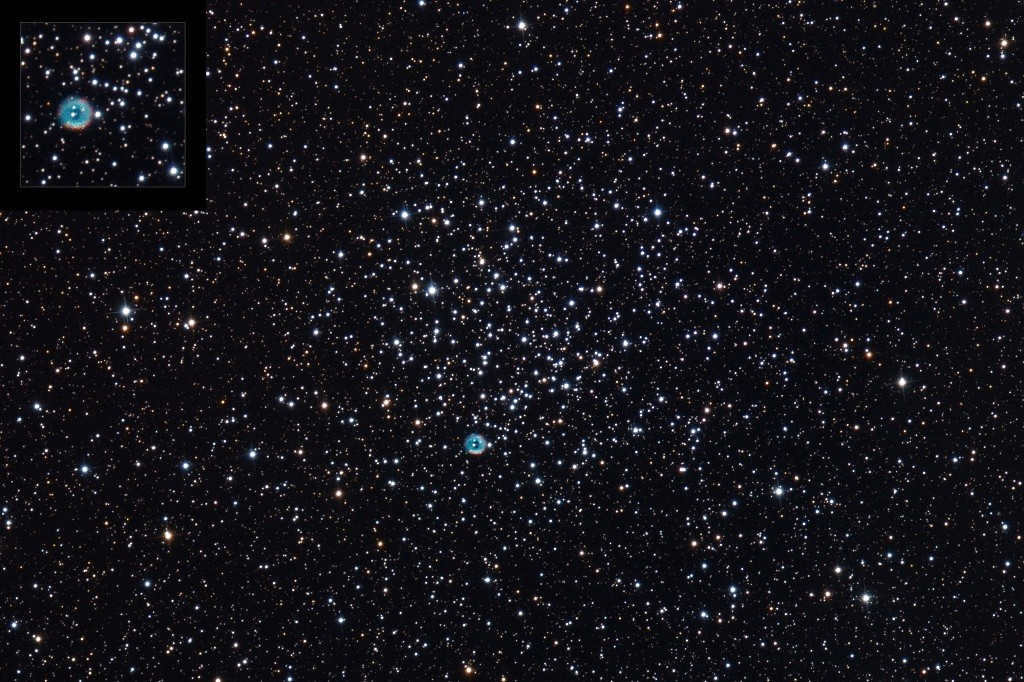 Stars like our Sun illuminate the surrounding Universe, providing warmth to the planets and supporting life. So why do they only shine at night? Well, that’s not entirely accurate. Stars also shine during the day, but they are not visible to the naked eye. During daylight hours, the Sun’s rays interact with the planet’s blue atmosphere, obscuring the cosmos like a curtain. However, at night, this curtain lifts, revealing the splendor of the cosmos – stars, galaxies, nebulae, comets, and countless other marvels of our Universe.
Stars like our Sun illuminate the surrounding Universe, providing warmth to the planets and supporting life. So why do they only shine at night? Well, that’s not entirely accurate. Stars also shine during the day, but they are not visible to the naked eye. During daylight hours, the Sun’s rays interact with the planet’s blue atmosphere, obscuring the cosmos like a curtain. However, at night, this curtain lifts, revealing the splendor of the cosmos – stars, galaxies, nebulae, comets, and countless other marvels of our Universe.
Classified based on their electromagnetic radiation spectrum, stars provide valuable information about their upper layer temperature and pressure, chemical composition, and other physical properties.
In a basic scenario, the spectrum can be obtained in the following manner: Light emitted by an object is passed through a narrow aperture with a prism positioned behind it. The prism refracts the light, which is then projected onto a screen or specialized photographic film. The resulting display showcases a seamless gradient of colors ranging from violet to red. A spectrum that lacks any dark lines is referred to as a continuous spectrum. A similar pattern can be observed when light is emitted by solid or liquid entities, such as an incandescent lamp.
Let’s take into account the following scenario: imagine a burner with a quantity of salt placed in its flame. In this particular situation, the flame will emit a vivid yellow hue. Furthermore, when we examine the vapor, we will notice a distinct yellow streak. This signifies that heated sodium vapor releases light with a wavelength corresponding to yellow. This characteristic is present in all substances in a gaseous state, and it is referred to as a line-shaped spectrum.
During his study of the Sun, Joseph Fraunhofer, a German optician, made an interesting observation. He noticed the presence of thin black lines in the Sun’s continuous emission spectrum. This discovery was later further investigated by Gustav Kirchhoff, who found that when a rarefied gas is in a state of luminescence, it absorbs light rays of the same wavelengths that it emits. These black lines in the spectrum became known as absorption lines. Scientists then utilized these laws to analyze the chemical composition of stars. By studying the specific wavelengths of radiation absorbed by gases in the star’s atmosphere, researchers were able to determine the star’s chemical makeup.
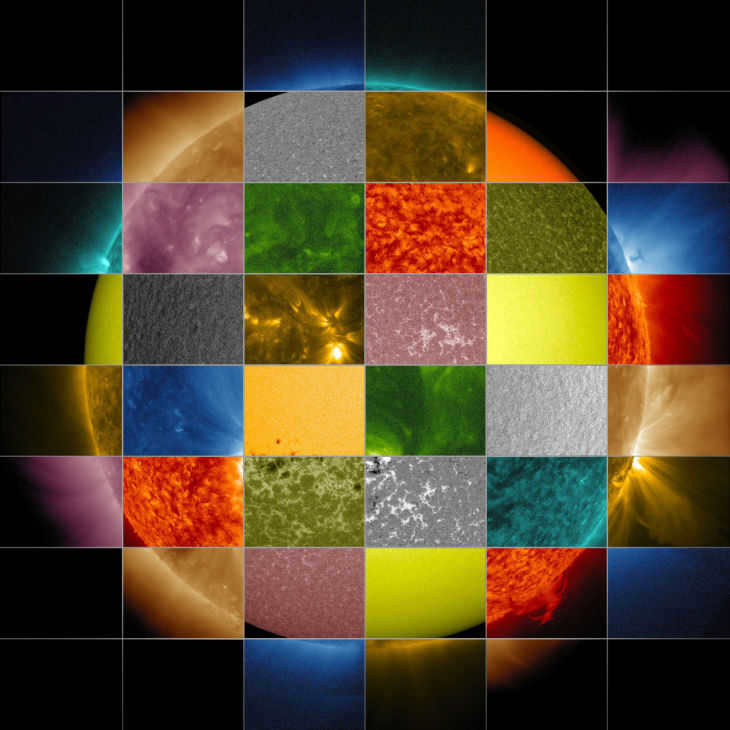
Later in spectroscopy, a variety of methods emerged for the study of different star properties. These methods included shifting the spectrum to one side, comparing it with the spectrum of a completely black body, and bifurcating overlapping lines, among others.
“White,” you confidently respond. Indeed, when you gaze at the night sky, you can observe numerous white stars. However, does this imply that there are no stars of other colors? Perhaps we simply fail to notice them?
Stars are colossal conglomerations of hot gas, primarily consisting of hydrogen and helium. The fusion of hydrogen and helium releases the energy that renders stars so brilliantly luminous and scorching, which likely explains why they appear white to us. What about the most renowned star – ? It no longer appears as white, but rather assumes a yellowish hue. Additionally, there are stars that exhibit red, brown, and blue hues.
To comprehend the reasons behind the varying colors of stars, we must embark on a journey through the entire lifecycle of a star, starting from its birth to its eventual demise.
 |
| Photo by Nigel Howe |
The formation of a star commences with a colossal cloud of dust known as a nebula. This nebula exerts a gravitational force that attracts the dust particles towards one another, resulting in a gradual consolidation. As the dust particles draw nearer, the gravitational force intensifies, causing the cloud to heat up and ultimately give birth to a protostar. Once the center of the protostar reaches a sufficient temperature, nuclear fusion ignites, ushering in the emergence of a young star. This newly formed star enters a phase known as “the main sequence,” during which it will exist and generate energy for billions of years. Throughout this period, the star will remain relatively stable until all of its hydrogen fuel is consumed. At this point, the outer layers of the star will expand, transforming it into a Red Giant – a star characterized by low temperature and high luminosity. Over time, the star’s core will commence the production of iron, triggering a collapse in the star’s structure. The subsequent fate of the star hinges upon its size. If the star is of medium size, it will transform into a white dwarf. Conversely, larger stars will undergo a colossal nuclear explosion, culminating in a supernova event. These supernovae can result in the formation of black holes or neutron stars, marking the end of their stellar existence.
Now you have a comprehension that every star experiences diverse trajectories of evolution and undergoes continual transformations in terms of its dimensions, hue, luminosity, and heat. Consequently, there exists a multitude of star classifications. The tiniest stars are characterized by a reddish appearance. Stars of intermediate size exhibit a yellow hue, similar to our own Sun. The larger stars, known as blue stars, stand out as the most radiant celestial bodies. On the other hand, brown dwarfs possess minimal energy and lack the ability to compensate for the energy dissipated through radiation. White dwarfs, in turn, gradually lose heat and eventually fade away, rendering them invisible and dim.
The Sun, the single star in our solar system, is classified as a yellow dwarf. Polaris, the guiding star for sailors, is categorized as a blue supergiant. Proxima Centauri, the star closest to the Sun, is classified as a red dwarf. The majority of stars in the Universe are also red dwarfs. Despite this, we perceive all stars as white. Why is that? Well, it’s because the stars are not bright enough for our eyes to detect their different colors. However, we are still able to distinguish the color of the brightest stars.
Now that you are aware that stars are not exclusively white, you can easily complete the task at hand.
- Create an illustration of a sky filled with vibrant stars. This is the type of sky we would perceive if our eyesight were more acute.
Are they shining in a unique way?
At one point, astronomers believed that stars shine in different ways due to their varying positions in relation to Earth. However, this belief is not entirely accurate. Astronomers have discovered that even stars that are equidistant from Earth can exhibit vastly different levels of brightness. This discrepancy in brilliance is not only affected by the stars’ distance, but also by their individual temperatures. To compare stars based on their apparent brightness, scientists utilize a specific unit of measurement known as absolute stellar magnitude. This unit enables them to calculate a star’s true emissions. Utilizing this methodology, scientists have determined that only 20 stars in the night sky possess the greatest levels of brightness.
What causes stars to have different colors?
As mentioned earlier, astronomers categorize stars based on their size and brightness. However, this is not the only way stars are classified. In addition to size and apparent brightness, stars are also classified based on their color. The reason for this is that the light emitted by stars has different wavelengths. These wavelengths can be quite short. Even a slight difference in the size of these wavelengths can result in a significant change in the color of a star, which is directly influenced by its surface temperature. For instance, heating an iron frying pan until it turns red-hot will cause it to take on a corresponding color.
The color spectrum of a star serves as a unique identifier, distinguishing its most prominent features. For instance, both the Sun and Capella, a star similar to the Sun, possess a pale yellow hue and maintain a surface temperature of 6000oC. Additionally, their spectra exhibit identical elements, including lines of sodium and iron.
Stars such as Betelgeuse and Antares exhibit a striking red coloration, with a surface temperature of 3000oC and a composition containing titanium oxide. Sirius and Vega, on the other hand, radiate a brilliant white glow, accompanied by a surface temperature of 10000oC. Their spectra showcase prominent hydrogen lines. Lastly, we have Orion, a bluish-white star with an extraordinary surface temperature of 30000oC.
The classification of stars based on their spectra and the correlation between color and surface temperature.
The color of a star is determined by the difference between its magnitudes. By mutual agreement, these scales are selected so that a white star like Sirius has the same magnitude in both scales. The discrepancy between the photographic and photovisual magnitudes is referred to as the color index of that particular star. For blue stars like Rigel, this value will be negative, as these stars appear darker on a regular plate compared to a plate sensitive to yellow light.
Red stars like Betelgeuse have color values ranging from +2 to -3 stellar magnitudes. This color measurement also serves as an indicator of the star’s surface temperature, with blue stars being significantly hotter than red stars.
Due to the ease of obtaining color indices, even for extremely faint stars, they play a significant role in studying the distribution of stars in space.
It quickly became evident that the spectra of stars can be categorized into a limited number of classes that gradually transition between each other. The system of spectral classification was developed at the Harvard Observatory under the guidance of E. Pickering.
Initially, the classes were designated using Latin letters in alphabetical order. However, as the classification was refined, the following designations were established for the successive classes: O, B, A, F, G, K, M. Additionally, a few unusual stars were grouped into classes R, N, and S, while individual outliers that didn’t fit into this classification were labeled as PEC (peculiar).
It is worth noting that the arrangement of stars by class also corresponds to their color.
- Class B stars, such as Rigel and numerous other stars in Orion, are blue;
- Stars of classes O and A have a white color, such as Sirius and Deneb;
- Stars of classes F and G have a yellow color, such as Procyon and Capella;
- Stars of classes K and M have orange and red colors, such as Arcturus, Aldebaran, Antares, and Betelgeuse.
When we arrange the spectra in the same order, we observe that the intensity of radiation reaches its maximum at the red end of the spectrum, while it decreases towards the violet end. This shift in intensity indicates a decrease in temperature as we move from class O to class M. The classification of stars is primarily determined by their surface temperature rather than their chemical composition. While it is generally assumed that the chemical composition is similar for the majority of stars, variations in surface temperature and pressure result in significant differences in stellar spectra.

Class O blue stars are the most scorching. They have a surface temperature of up to 100,000°C. Their spectra are easily identifiable by the presence of distinct bright lines or the extension of the background into the ultraviolet range.
Immediately after them come class B blue stars. These stars are also extremely hot, with a surface temperature of 25,000°C. Their spectra include helium and hydrogen lines. The former become fainter and the latter become stronger as you move up to class A.
In the F and G classes, (a typical class G star being our Sun), the lines of calcium and other metals like iron and magnesium become increasingly pronounced.
In class K, the calcium lines are very prominent, and molecular bands also become visible.
Class M comprises of red stars with surface temperatures below 3000°C; their spectra exhibit visible titanium oxide bands.
The R, N, and S classes are part of a parallel group of cool stars that display other molecular components in their spectra.
However, for the connoisseur, there is a significant distinction between “cold” and “hot” Class B stars. In a precise classification system, each class is further divided into multiple subclasses. The hottest B-class stars fall into the B subclass. The HE subclass includes them, while those with average temperatures are in the B5 subclass. Specifically, subclass B5 comprises of them, and the coldest stars are in subclass B9. Immediately following them are the stars belonging to the AO subclass.
The examination of stellar spectra is extremely valuable, as it enables a rough categorization of stars based on their absolute stellar magnitudes. For instance, the star BZ is classified as a giant with an absolute magnitude of approximately 2.5. However, it is possible for the star to be ten times brighter (absolute magnitude – 5.0) or ten times dimmer (absolute magnitude 0.0), as a more precise estimation cannot be determined solely based on spectral class.
When determining the classification of stellar spectra, it is crucial to attempt to differentiate between giants and dwarfs within each spectral class, or in cases where this distinction is not present, to identify giants that deviate significantly from the normal luminosity sequence.
Stars of various colors grace the sky. Color-enhanced image
The origin of star color
The mystery behind the vibrant hues of stars has proven to be a valuable tool for astronomers, as it allows them to gain insights into the characteristics of different stars. This phenomenon is rooted in a fascinating natural occurrence – the connection between the composition of a star and the color of light it emits.
You may have already noticed this phenomenon in your own observations. A low-power 30-watt light bulb, for instance, emits an orange glow, while a drop in voltage causes the filament to smolder in a dull red hue. Stronger bulbs, on the other hand, emit a yellow or even white light. In contrast, a welding electrode and a quartz lamp emit a brilliant blue light during operation. However, caution should be exercised when observing them, as their intense energy can pose a risk of retinal damage.
Consequently, as an object’s temperature increases, its glow color becomes closer to blue, while colder objects tend to have a darker red glow. This principle applies to stars as well, as their color is influenced by their temperature. However, the impact of a star’s temperature on its color is relatively small, as certain elements can be hidden by ionization.
Nevertheless, the radiation emitted by a star allows us to determine its composition. Each substance has its own unique range of wavelengths. Some colors of light can pass through these substances without obstruction, while others are blocked. Scientists can identify the chemical elements present in a star by analyzing the blocked ranges of light.
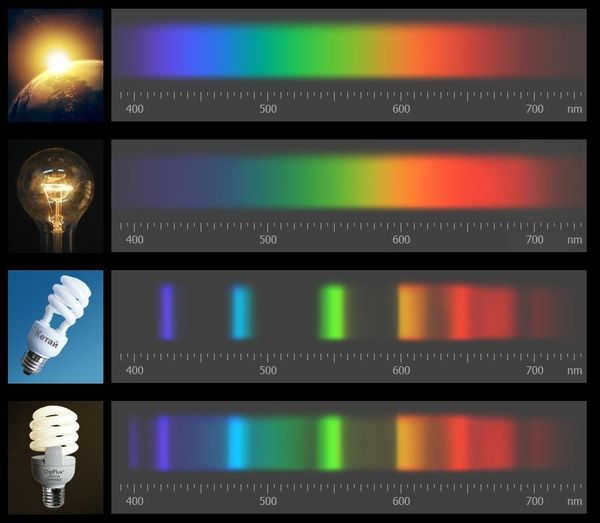
The Science behind the Different Colors of Stars
What is the scientific explanation for this phenomenon? The temperature of a star determines the speed at which its molecules move. Higher temperatures result in faster movement, which affects the length of light waves passing through the star. A hot star shortens the wavelengths, while a cold star lengthens them. The color of visible light is determined by the wavelength: shorter wavelengths produce blue shades, while longer wavelengths produce red shades. White light is created when multiple spectral rays overlap.
Using the telescope, it is possible to observe up to 2 billion stars with a star magnitude of up to 21. The Harvard spectral classification system is used to categorize stars based on their temperature. The classes are organized in descending order of stellar temperature and are represented by letters of the Latin alphabet. There are seven classes in total: O – B – A – P – O – K – M.
The color of a star is a good indicator of the temperature of its outer layers. Hot stars belonging to spectral classes O and B appear blue in color, while stars similar to our Sun (which belongs to spectral class 02) appear yellow. On the other hand, stars in spectral classes K and M are red in color.
Stars of the sixth stellar magnitude were found to be fainter than stars of the first stellar magnitude by a factor of 2.55. To simplify comparisons, English astronomer N. K. Pogsoy (1829-1891) suggested in 1856 that stars which are 100 times fainter than first magnitude stars should be classified as sixth magnitude stars. Since all stars are located at varying distances from Earth, it would be more convenient if these distances were equal.
The absolute stellar magnitude of a star refers to the magnitude it would have at a distance of 10 parsecs. It is denoted as M, while the apparent stellar magnitude is denoted as m.
The outer layers of stars, which emit their radiation, are primarily composed of hydrogen, with helium as the second most abundant element. The presence of other elements is relatively small.
Stars’ Temperature and Mass
The spectral class or color of a star provides information about its surface temperature. Stars emit radiation similar to black bodies at corresponding temperatures, allowing us to determine the power radiated per unit of their surface area per unit of time using the Stefan-Boltzmann law.
Stars can be categorized based on their luminosity, temperature, color, and absolute magnitude using the Hertzsprung-Russell diagram:
- Main sequence stars (including the Sun, a yellow dwarf, at its center)
- Supergiants (large in size and high in luminosity, such as Antares and Betelgeuse)
- sequence of red giants
- dwarfs
- subdwarfs
- blue-white sequence
This classification is also based on the age of the star.
The following types of stars are identified:
- normal (like the Sun);
- binary (like Mizar and Albcor), which can be further divided into:
- (a) visual binaries, identified as double stars when observed through a telescope;
- (b) multiples, which are systems of stars with more than 2 but less than 10 components;
- (c) optical binaries, where the apparent proximity of the stars is a result of a chance alignment in the sky, but they are actually distant in space;
- (d) physical binaries, where the stars are gravitationally bound and orbit around a common center of mass.
- e) Stars that are close to each other in mutual rotation and their duality can be determined by their spectrum are known as spectral-doubles;
- f) Stars that, in mutual rotation, block each other are referred to as eclipse-doubles;
New stars are stars that have existed for a long time but suddenly burst into flames. Their brightness increases by a factor of 10,000 in a short time (the amplitude of brightness changes from 7 to 14 stellar magnitudes).
Supernovae are stars that were invisible in the sky but suddenly burst into flame, increasing in brightness by a factor of 1,000 relative to normal new stars.
Pulsar refers to a neutron star that arises from a supernova explosion.
The data suggests that an average of 2-3 pulsars are generated every century, which is in line with the frequency of supernova explosions in the Galaxy. This information provides insights into the evolution of stars.
The Life Cycle of Stars
There are regions in the sky where the necessary conditions for the emergence of stars are present. By examining photographs of blurry areas in the Milky Way, scientists have discovered small, irregularly shaped black spots called globules. These globules are dense collections of dust and gas, and they contain particles that absorb light from the stars located behind them. The size of these globules is immense, spanning several light-years in diameter. Although these clusters have a low density, their overall volume is substantial enough to support the formation of star clusters with masses similar to that of the Sun.
Within the dark spheroid, subjected to the influence of radiation emitted by the neighboring celestial bodies, there occurs a process of matter compression and consolidation. The duration of this compression is determined by the magnitude of the radiation emitted by the surrounding sources and its intensity. Additionally, the gravitational forces resulting from the mass concentration at the core of the spheroid contribute to its compression, causing matter to migrate towards its center. As the matter particles descend, they acquire kinetic energy, leading to an increase in temperature within the gas cloud.
The descent of matter may require several centuries to complete. Initially, it proceeds gradually and leisurely due to the relatively weak gravitational forces that attract particles towards the core. As time goes on, the globule shrinks and the gravitational field intensifies, causing the descent to accelerate. However, the globule is immense, with a diameter of at least one light-year. Consequently, the distance from its outer boundary to the core could exceed 10 trillion kilometers. If a particle located at the periphery of the globule begins its journey towards the core at a velocity slightly below 2 km/s, it will take a staggering 200,000 years to reach the center.
For anyone interested in the indigenous Asian populations, it is important to have an understanding of the Uighurs. These individuals trace their origins back to East Turkestan, which is presently known as the Xinjiang Uyghur region in China. Identified as a Turkic-speaking group, the Uighurs primarily hail from the Uyghur region of China.
The insurance company, which has compensated the victim according to the insurance agreement, has the right to demand reimbursement from the person responsible for the accident. In other words, once the insurance company has covered the cost of repairing the victim’s car or has made a payment to the
Page 3 of 15 What was the reason behind the Moors’ invasion of Spain? In the 8th century, when the Moors launched their invasion, Gothia was already on the verge of collapse as a result of internal conflicts. The population of true Goths was dwindling, and they had no interest in mingling with the Spanish-Romans and Highlanders. The Goths
Latest resources
The tax authorities are unable to carry out a consecutive examination of all businesses, as they simply lack the necessary resources. Hence, they focus their efforts on scrutinizing those entities that are more likely to have committed infractions, resulting in the imposition of additional taxes and penalties. To achieve this objective, the tax inspection relies on preliminary analysis before initiating any audits.

Tax responsibilities have always been a fundamental aspect of contemporary society. The Tax Code of the Russian Federation provides information on the taxation of individuals and various tax categories. In this article, we will provide a more comprehensive overview of the primary taxes that individuals are required to pay.

Lymphogranulomatosis (Hodgkin’s disease) is a type of tumor disease classified as a hemoblastosis. It can occur at any age, although it is more common in men, who are affected 2.5-3 times more often than women. The main symptom of this condition is the enlargement of lymph nodes, which typically occurs in specific areas of the body.
At three years and three months, children’s development enables them to ride a tricycle without any assistance from adults. Furthermore, at this stage, they are capable of independently enjoying activities such as swinging and sledding down small slides. They demonstrate a growing sense of independence and exploration.
The Mysterious Phenomenon of Blue Stars: Unveiling the Secrets of Size and Color
Have you ever wondered about the color of stars and what sets them apart? Join us in this captivating video as we delve into the enigmatic world of stars and uncover their fascinating variations in size and color.
Differences in Temperature and Color of Objects
The emission of light from objects varies depending on their temperature. This difference in temperature leads to variations in the wavelengths of the emitted light, which, in turn, affects the perceived color of the object by the human eye. When an object has a shorter wavelength, it is hotter, and its color tends to be closer to white or blue. This principle also applies to stars.
The coldest stars are those that emit red light. These stars have a surface temperature of only 3,000 degrees Celsius. Moving up the temperature scale, yellow stars, like our Sun, are hotter with a photosphere temperature of around 6,000 degrees Celsius. White stars are even hotter, ranging from 10,000 to 20,000 degrees Celsius. Finally, the hottest stars are blue stars, which have a surface temperature ranging from 30,000 to 100,000 degrees Celsius.
Characteristics of yellow dwarfs
Yellow dwarfs, also known as “dwarfs,” are small in size and have an impressive lifespan of approximately 10 billion years. The Sun, which is a yellow dwarf, is currently in the middle of its life cycle and has about 5 billion years left before it descends from the Main Sequence and transforms into a red giant.
Yellow dwarfs, like the Sun, have dimensions similar to that of the Sun. They derive their energy from the synthesis of helium from hydrogen. Once the core runs out of hydrogen, helium combustion begins and the yellow dwarf moves on to the next stage of evolution.
Aside from the Sun, other examples of yellow dwarfs include A, Alpha of the Northern Crown, Mu of Volopassus, Tau Kita, and other luminaries.
Yellow subgiants
Sun-like stars undergo a transformation once they deplete their hydrogen fuel. When the helium in the core ignites, the star undergoes expansion and becomes a yellow subgiant. However, this phase does not occur immediately. Initially, the outer layers of the star start to burn. The star has already moved away from the Main Sequence, but it has not yet expanded – it is in the subgiant stage. Typically, the mass of such a star ranges from 1 to 5 times that of the Sun.
The phase of being a yellow subgiant can also be observed in stars that are even larger in size. However, this stage is less noticeable for them. One of the most well-known subgiants today is Procyon (Alpha Minor Dog).
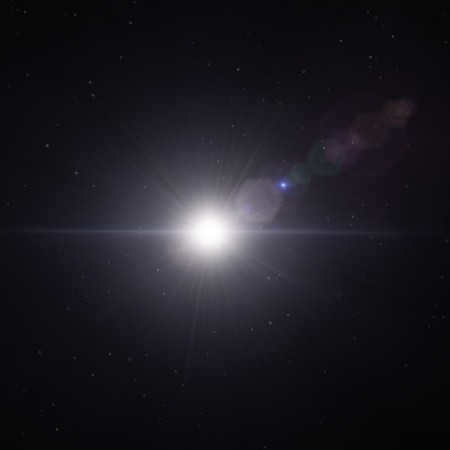
An extraordinary find
The yellow stars mentioned earlier are quite common in the vast expanse of the Universe. However, the same cannot be said for hypergiants. These celestial giants are known for their immense size, brightness, and weight, but they have a surprisingly short lifespan. While most hypergiants fall into the category of bright blue variables, there are also rare instances of white, yellow, and even red hypergiants.
One such extraordinary cosmic entity is Rho Cassiopeia, a yellow hypergiant with a luminosity 550,000 times greater than that of the Sun. This distant star is located approximately 12,000 light years away from our planet and can be observed with the naked eye on a clear night (apparent luminosity – 4.52m).
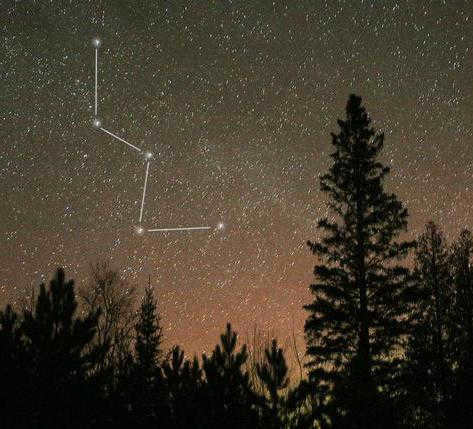
Supergiants
Supergiants are a unique type of star known as hypergiants. This category also encompasses yellow stars, which astronomers believe to be a transitional phase in the evolution of stars from blue to red supergiants. However, yellow supergiants can exist for a significant amount of time before progressing further in their evolution. Typically, stars in this stage do not undergo a supernova event. Throughout the history of space exploration, only two supernovae resulting from yellow supergiants have been observed.
Notable examples of yellow supergiants include Canopus (Alpha Carinae), Rastaban (Beta Draconis), Beta Aquarius, and other celestial objects.
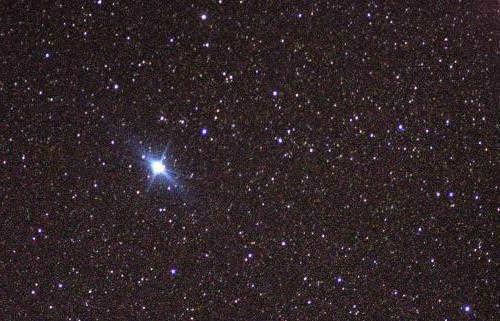
“White stars,” you confidently reply. Absolutely, if you gaze up at the night sky, a multitude of white stars can be observed. However, does this imply that there are no stars of other colors? Perhaps we simply fail to perceive them?
Stars are vast conglomerations of scorching gas. They primarily consist of two types of gas, hydrogen and helium. The fusion of hydrogen and helium produces the energy that causes stars to radiate such intense brightness and heat, which is presumably the reason they appear white to us. What about the most renowned star – ? It no longer appears as white, it takes on more of a yellow hue. Additionally, there are red, brown, and blue stars.
To comprehend why stars exhibit a range of colors, we must trace the complete lifespan of a star, from its inception to its ultimate demise.
 |
| Image by Nigel Howe |
The process of star formation starts with a massive cloud of dust known as a nebula. The gravitational force between the dust particles causes them to come closer together. As they merge, the gravitational force intensifies. This leads to the heating of the cloud and the birth of a protostar. Once the core of the protostar reaches a certain temperature, nuclear fusion begins, giving birth to a young star. This star enters a phase called the "main sequence," during which it generates energy for billions of years. Eventually, all the hydrogen fuel in the star gets depleted, causing the outer layers to expand and transform it into a Red Giant – a star with a low temperature but high luminosity. Over time, the star’s core starts producing iron, leading to its collapse. The outcome depends on the star’s size. If it is medium-sized, it will become a white dwarf. Larger stars, on the other hand, will undergo a massive nuclear explosion and become supernovae. These supernovae can either result in the formation of black holes or neutron stars, marking the end of their stellar lives.
The Sun, which is the only star in our solar system, is classified as a yellow dwarf. Polaris, the star that serves as a guide for sailors, is a blue supergiant. Proxima Centauri, the star closest to the Sun, is a red dwarf. The majority of stars in the Universe are also red dwarfs. Despite this, we perceive all stars as white. The reason for this is the faintness of the stars and the limitations of our eyesight, which prevent us from discerning their different colors. However, we are still capable of perceiving the color of the brightest stars.
Now that you are aware that stars are not exclusively white, you can easily complete the task.
- Create a sky filled with vibrant, colorful stars. This is the type of sky we would observe if our eyesight were enhanced.
This research was conducted by a first-grade student from MOU SOSH No. 25.
The aim of the study is to investigate the reason behind the varying colors of the stars in the night sky.
Approaches and methodologies: Utilizing observation, experimentation, comparative analysis of observational data, visiting a planetarium, and conducting research using diverse sources of information.
Data acquired: Stars are luminous spheres of hot gas. The Sun is the closest star to us. Each star possesses a unique hue. The hue of a star is determined by the temperature on its outer layer. Through experimentation, it has been discovered that heated metal initially emits a red glow, then transitions to yellow, and finally becomes white as the temperature rises. This phenomenon is also observed in stars. The red stars are the coolest, while the white (or even blue!) stars are the hottest. Massive stars are both hot and white, while smaller, less massive stars are red and comparatively cooler. Additionally, the color of a star can provide insights into its age. Young stars are the hottest and emit white and blue light. Older stars, on the other hand, emit red light as they cool down. Middle-aged stars radiate yellow light. The amount of energy emitted by stars is so immense that we are able to observe them from vast distances: tens, hundreds, or even thousands of light years away!
Conclusions:
1. Stars exhibit various colors. The color of a star is dependent on its surface temperature.
2. The age and mass of a star can be determined from its color.
3. Stars are visible to us due to the immense energy they emit.
Download:
Preview:
XIV city scientific-practical conference of schoolchildren
What causes stars to have different colors?
Leader: Marina Viktorovna Mukhina, elementary school teacher
Stars are endlessly fascinating and captivating. Throughout history, people have attributed great significance to these celestial bodies. Astronomers from ancient times to the present day have claimed that the arrangement of stars in the sky has a profound impact on various aspects of human life. Stars are used to predict the weather, create horoscopes, and navigate lost ships at sea. But what are they really, these shimmering points of light?
The enigma of the starry sky captivates the curiosity of every child, without exception. Extensive research conducted by scientists and astronomers has unraveled numerous mysteries, resulting in the creation of countless books and informative movies. However, despite these efforts, many children remain unaware of the secrets concealed within the celestial expanse.
Personally, the starry sky continues to bewilder me. The more I gaze upon the stars, the more inquiries arise within me. One particular question that often perplexes me is: what hues do these shimmering, enchanting stars possess?
Thus, my research objective is to elucidate the reasons behind the diverse colors exhibited by stars in the sky.
Consequently, I have established the following tasks for myself:
- To seek answers to this question by engaging in discussions with knowledgeable individuals, consulting encyclopedias, books, and online resources;
- To conduct observations of stars both with the naked eye and employing the aid of a telescope;
4. My goal is to educate my classmates about the vast array of celestial bodies in the universe.
The focus of my research is on stars and their various parameters.
- I will accomplish this by reading specialized literature and watching popular science programs;
- Additionally, I will explore the night sky using a telescope and specialized software;
- Lastly, I will conduct an experiment to study the relationship between an object’s temperature and its color.
By doing this, I hope to spark interest in this subject among my classmates.
I have frequently gazed upon the magnificent expanse of the night sky, adorned with countless radiant celestial bodies. The stars, particularly noticeable during the darkness of night and under clear atmospheric conditions, have consistently captivated my attention with their unique and enchanting radiance. Astrologers assert that these celestial entities possess the power to influence the destiny and future of individuals. However, only a few can truly elucidate the nature of these celestial wonders.
By delving into the realm of reference literature, I have managed to uncover the truth behind these celestial entities. A star, as I have discovered, is an astronomical object in which thermonuclear reactions occur, resulting in the formation of a colossal and luminous sphere comprised of gaseous matter.
Stars are incredibly abundant in the universe, with a mind-boggling number of over 200 billion stars just in our galaxy alone. And this is just a fraction of the countless galaxies that exist. When we look up at the sky, we can only see a small fraction of these stars with our naked eye, about 6000 in total, with 3000 visible in each hemisphere. It’s remarkable to think about the vast distances that separate these stars from Earth.
Among all the stars, the Sun is the most well-known and closest to us. This proximity makes it appear much larger than other stars. In fact, the Sun’s light is so bright during the day that it outshines all the other stars, making them invisible to our eyes. To put things in perspective, if the Sun is 150 million kilometers away from Earth, the next closest star, Centaurus, is already a staggering 42,000 billion kilometers away.
How did the Sun come into existence? After conducting a thorough analysis of the available literature, I have come to the realization that, similar to other celestial bodies, the Sun originated from a nebula, which is a cluster of cosmic gas and dust. The compression of this gas and dust led to the formation of a dense mass that eventually reached a scorching temperature of 15,000,000 Kelvin, which is the precise temperature at the core of the Sun.
Consequently, I have discovered that stars are essentially spherical formations of gas that exist within the vast expanse of the Universe. However, I am left wondering, what causes them to emit varying hues of light?
Chapter 2: The correlation between a star’s temperature and its resulting color
I have reached the following conclusions: the most luminous stars are: 1. R136a12, a giant star located in the star formation region known as 30 Goldfish; 2. VY SMa, a giant star found in the constellation Big Dog; 3. Deneb, which is situated in the α Swan constellation; 4. Rigel, located in the β Orion constellation; 5. Betelgeuse, found in the α Orion constellation. The Star Rover program for iPhone, assisted by my father, helped me identify the names of these stars. Interestingly, the first three stars emit a bluish glow, the fourth emits a blue-white glow, and the fifth emits a reddish-orange glow. The brightest star discovery was made by scientists utilizing NASA’s Hubble Space Telescope.
During my research, I made an observation that the brightness of stars is influenced by their color. However, the question arises: why do stars exhibit such diversity in their appearances?
Let’s examine the Sun, an observable star. Since our earliest days, we have depicted it as yellow because that is its true color. I embarked on a study of this star’s characteristics. The temperature on its surface measures approximately 6,000 degrees. I acquainted myself with other stars through encyclopedias and the INTERNET. I discovered that stars come in various hues. Some are white, while others are blue or orange. There exist both white and red stars. It appears that a star’s color is determined by its surface temperature. The hottest stars exhibit a white or blue hue to us. Their surface temperatures span from 10 to 100,000 degrees Celsius. An average-temperature star assumes a yellow or orange shade. The coldest stars are red. Their surface temperature hovers around 3,000 degrees. Notably, these stars are significantly hotter than a campfire’s flames.
My parents and I conducted an experiment in which we heated an iron spokeshave using a gas burner. Initially, the spokeshave had a gray color. However, as we heated it, it became hot and turned red. The temperature of the spokeshave rose significantly. Upon cooling, the spokeshave returned to its original gray color. This led me to conclude that the color of a star changes as its temperature increases. Interestingly, this phenomenon differs for stars compared to humans. When humans are hot, they typically turn red, whereas when they are cold, they turn blue. In contrast, with stars, the hotter they are, the bluer they appear, and the colder they are, the cooler they appear.
It is well known that when metal is heated, it first starts to emit a red glow, then transitions to yellow, and finally becomes white as the temperature continues to rise. This same process applies to stars. Red stars are the coldest, while white (and even blue!) stars are the hottest.
Chapter 3: The Mass of a Star and its Color. The Age of the Star.
Back when I was just 6 years old, my mother and I had the opportunity to visit the planetarium located in the city of Omsk. It was there that I first discovered the fascinating fact that stars come in a wide variety of sizes. Some stars are quite large, while others are much smaller. Additionally, stars can vary in terms of their weight, with some being heavier and others being lighter. With the guidance of the adults accompanying me, I embarked on the task of arranging the stars we were studying from the lightest to the heaviest. And to my amazement, I made an intriguing observation! It turned out that the blue stars were actually heavier than the white ones, the white stars were heavier than the yellow ones, the yellow stars were heavier than the orange ones, and the orange stars were heavier than the red ones.
Interestingly, the color of a star can provide insightful information about its age. Young stars, for instance, tend to be the hottest and emit a brilliant white or blue light. On the other hand, as stars age and begin to cool down, they start to emit a reddish light. Stars that fall into the middle-age category typically shine with a yellow light.
The amount of energy that stars emit is absolutely mind-boggling. It is this immense energy that allows us to see stars even when they are located at incredibly vast distances from us, sometimes spanning tens, hundreds, or even thousands of light years away!
In order to perceive a star, it is necessary for the light emitted by the star to traverse the various layers of the Earth’s atmosphere. The ever-changing layers of air cause the light to refract, creating the illusion of twinkling stars. However, in reality, the light emitted by the stars remains continuous and unobstructed.
Therefore, after conducting my research, my classmates and I have acquired fresh knowledge regarding the nature of stars, including the factors that influence their temperature and color.
Experts have proposed multiple theories about the origin of stars. The most plausible one suggests that blue stars were once binary systems that underwent a process of merging. When two stars merge, a new star with significantly higher brightness, mass, and temperature is formed.
Examples of blue stars:
- Gamma Sails;
- Rigel;
- Orion’s Zeta;
- Alpha Giraffe;
- Zeta Corma;
- Tau of the Big Dog.
Stars that appear white in color are known as white stars
A particular scientist made a remarkable finding of an extremely faint star with a white hue, which is in close proximity to Sirius and has been designated as Sirius B. This extraordinary star has a surface temperature of 25000 Kelvin and possesses a relatively small radius.
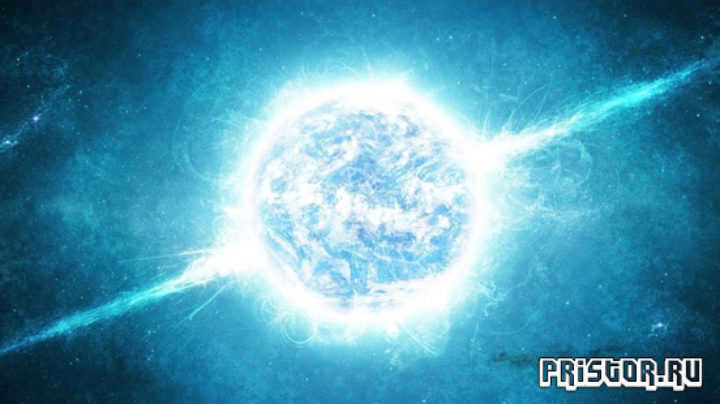
Stars with a yellow hue – stars of a yellow coloration
These particular stars emit a golden radiance and possess a mass that falls within the range of the Sun’s mass, which is approximately 0.8-1.4. Typically, the surface of these stars is heated to a temperature of 4-6 thousand Kelvin. The lifespan of such a star amounts to roughly 10 billion years.
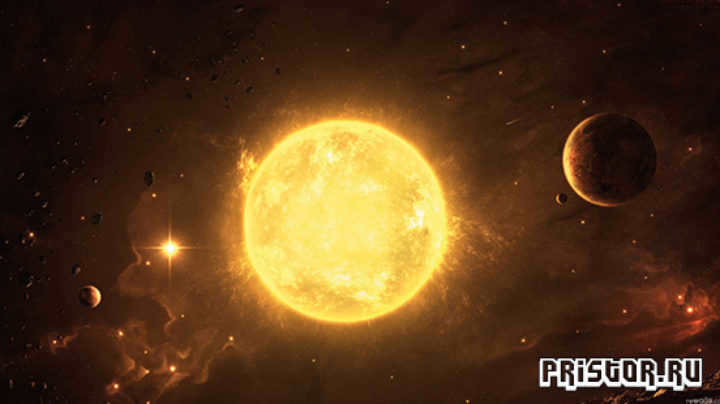
Examples of yellow stars:
Stars that are colored red are known as red stars
The first red stars were discovered in 1868. They have a relatively low temperature, and the outer layers of red giants contain a significant amount of carbon. Previously, these stars were classified into two spectral classes – N and R, but scientists have now identified another common class – C.
Magnitudes. By convention, these scales are chosen so that a white star like Sirius has the same magnitude in both scales. The difference between the photographic and photovisual magnitudes is referred to as the color index of the star. For blue stars like Rigel, this value will be negative because these stars appear darker on a regular photographic plate compared to a plate sensitive to yellow light.
Red stars, such as Betelgeuse, have color values that can reach up to +2-3 stellar magnitudes. This measurement of color is also indicative of the star’s surface temperature, with blue stars being significantly hotter than their red counterparts.
Given that color indices can be easily obtained even for faint stars, they play a crucial role in studying the distribution of stars in space.
Among the various instruments used for studying stars, one can observe that they are not all the same simply by taking a quick look at their spectra. The strength of the Balmer lines of hydrogen varies across different spectra, ranging from strong to weak or even absent.
It quickly became evident that stars could be categorized into a limited number of classes based on their spectra, which gradually transitioned into one another. The classification system spectral classification was developed at Harvard Observatory under the guidance of E. Pickering.
Initially, the classes were assigned Latin letters in alphabetical order, but as the classification was refined, the following designations for consecutive classes were established: O, B, A, F, G, K, M. Additionally, a few unique stars were grouped into classes R, N, and S, while individual stars that did not fit into this classification were labeled as PEC (peculiar).
It is worth noting that the arrangement of stars by class also corresponds to their color.
- Stars in the Orion constellation, such as Rigel, belong to Class B, and they appear blue in color;
- Stars in classes O and A, such as Sirius and Deneb, appear white;
- Stars in Class F and G, such as Procyon and Capella, appear yellow;
- Stars in classes K and M, such as Arcturus, Aldebaran, Antares, and Betelgeuse, appear orange and red.
When we arrange the spectra in the same order, we observe that the maximum intensity of emission shifts from violet to red. This shift indicates a decrease in temperature as we move from class O to class M. A star’s position in the sequence is primarily determined by its surface temperature rather than its chemical composition. It is generally assumed that the chemical composition is similar for most stars, but variations in surface temperature and pressure lead to significant differences in stellar spectra.

Class O blue stars are the hottest. They have a surface temperature that can reach up to 100,000°C. The presence of certain bright lines or the extension of the background into the ultraviolet region easily distinguishes their spectra.
Next in line are the class B blue stars. These stars are also extremely hot, with a surface temperature of 25,000°C. Their spectra exhibit helium and hydrogen lines, with the former being weaker and the latter being stronger as they progress to Class A.
In the F and G classes, which includes stars like our Sun, the lines of calcium and other metals like iron and magnesium become increasingly prominent.
In class K, the calcium lines are particularly strong, and molecular bands also become evident.
Class M consists of red stars that have surface temperatures below 3000°C; their spectra show the presence of titanium oxide bands.
The R, N, and S classes are part of a separate group of cool stars that have additional molecular components in their spectra.
However, there is a significant distinction for experts between “cool” and “hot” Class B stars. In a precise classification system, each class is further divided into multiple subclasses. The hottest B-class stars belong to the HE subclass, while those with average temperatures fall into the B5 subclass. The coldest stars are in the B9 subclass. Immediately following them are the stars of the AO subclass.
The examination of stellar spectra is highly valuable as it enables a rough categorization of stars according to their absolute stellar magnitudes. For instance, the star BZ is classified as a giant with an absolute magnitude of approximately 2.5. Nevertheless, it is conceivable that the star could be ten times brighter (absolute magnitude – 5.0) or ten times dimmer (absolute magnitude 0.0), as it is not possible to provide a more precise estimation based solely on spectral class.
When establishing the classification of stellar spectra, it is crucial to attempt, within each spectral class, to distinguish between giants and dwarfs or, in cases where this differentiation is not applicable, to identify giant stars that exhibit excessive or insufficient luminosity in comparison to the normal sequence.
When you gaze up at the sky on a cloudless night, you may notice an abundance of brilliant stars shining in various shades. Have you ever pondered the factors that contribute to the color of these celestial bodies?
The color of a star is influenced by its surface temperature. Like an assortment of precious gems, the array of stars in the sky boasts an infinite range of hues, akin to a magical palette in the hands of an artist. The hotter a star is, the higher the energy emitted from its surface, resulting in shorter wavelengths of radiation.
Even the slightest variation in wavelength can alter the perceived color to the human eye. The longest wavelengths appear red, but as the temperature rises, the color transitions from orange to yellow, eventually reaching white and finally transforming into white-blue.
The exploration of the range of stars is the fundamental basis of contemporary astrophysics. The most common information available to us about celestial bodies is their color.
Stars that are blue
Stars that are blue are the largest and hottest. The average temperature of their outer layers is around 10000 Kelvin, and individual stellar giants can reach temperatures as high as 40000 Kelvin.
Recently formed stars that are just starting their “journey of life” emit light in this range. For instance, Rigel, one of the primary stars in the Orion constellation, has a bluish-white color.
Yellow stars
The Sun, the center of our planetary system, has a surface temperature exceeding 6000 Kelvin. When observed from space, it and other similar celestial bodies appear brilliantly white, but when viewed from Earth, they have a yellowish hue. Gold stars are known for their average age.
Among the other celestial bodies we are familiar with, one example of a white star is Sirius. However, determining its color with the naked eye can be challenging. This is due to its low position above the horizon, which causes its radiation to be heavily distorted by multiple refractions. At mid-latitudes, Sirius, often characterized by its twinkling, can display the entire spectrum of colors in just half a second!
Red stars
Red dwarfs, which have masses less than 7.5% of the Sun’s, are low-temperature stars that have a dark reddish hue. Their temperature is below 3500 Kelvin, and despite emitting a rich shimmer of various colors and shades, we perceive them as red.
Aging stars that have exhausted their hydrogen fuel also exhibit a red or even brown appearance. Generally, the radiation emitted by old and cooling stars falls within this range of the spectrum.
The second prominent star in the constellation of Orion, Betelgeuse, stands out due to its distinctive red hue, as well as its position just to the right and above Aldebaran, which is orange in color, on a celestial map.
The most ancient red star that exists – HE 1523-0901 located in the constellation Libra is a massive second-generation celestial body discovered on the outskirts of our galaxy, approximately 7500 light-years away from the Sun. Its potential age is believed to be around 13.2 billion years, which is nearly equivalent to the estimated age of the entire Universe.
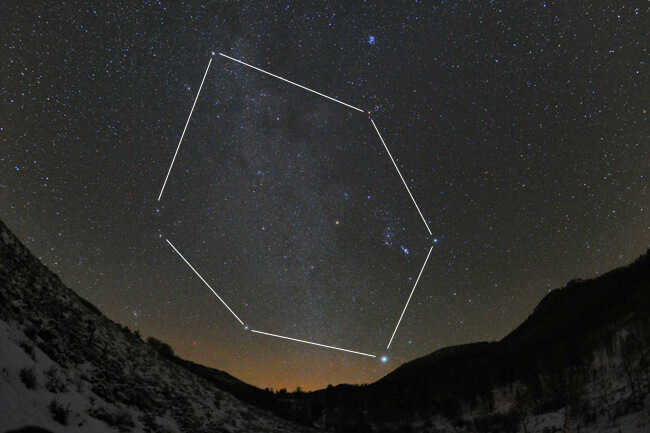
The Sun in our solar system emits a pale yellow light. Generally, stars come in a wide range of colors, creating a mesmerizing display across the vast expanse of the universe. Among the various constellations, there is one known as the Jewel Box, where sapphire and blue stars are sprinkled across the dark backdrop of the night sky. Amidst this celestial ensemble, positioned at the center of the constellation, shines a brilliant orange star.
The reason why stars have different colors is because they have varying temperatures. This phenomenon occurs due to the nature of light, which is a form of wave radiation. The wavelength of a wave is the distance between the crests of the wave. In the case of light waves, they are incredibly short. To put it into perspective, imagine dividing an inch into 250,000 equal parts (1 inch equals 2.54 centimeters). A few of these tiny parts would represent the length of a light wavelength.
Even the slightest variation in the size of light waves can have a significant impact on the color we perceive in an image, despite the fact that the wavelength of light is incredibly small. This is because our eyes interpret light waves of different wavelengths as different colors. For instance, the wavelength of red light is one and a half times longer than that of blue light. When we see white light, it is actually a combination of photons with varying wavelengths, representing different colors.
Our everyday experiences teach us that the color of objects is influenced by their temperature. If we were to place an iron poker in a fire, it would gradually change color as it heats up. Initially, it would become red, then progressively redder. If the poker could withstand higher temperatures without melting, it would transition from red to orange, then to yellow, and eventually to white. Finally, at its highest temperature, it would appear as a blue-white hue.

